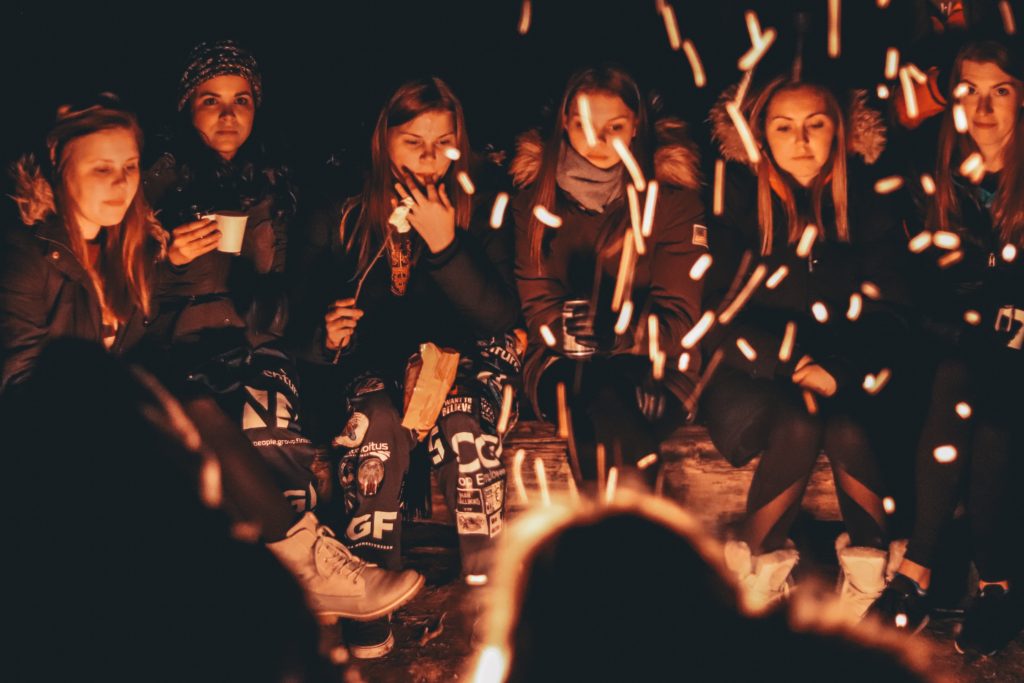Whether you’re leading a small group of teenagers on their very first backpacking trip or guiding a university climbing club on an advanced mountaineering adventure, you’ll likely need to obtain a special use permit in order to execute the trip if it occurs on U.S. Forest Service lands. While applying for a permit might seem daunting, we want to help demystify the process, which has actually become more streamlined in no small part thanks to the efforts of the Coalition for Outdoor Access, a group of outdoor organizations working together to improve access to public lands for all.
THE “WHAT” AND “WHY” OF PERMITS
Every day across the United States, people recreate across a variety of public lands, from city parks to national forests. Many of these uses – from hiking to birdwatching – require little more than an entrance fee, if that. However, the requirements change when you begin to consider overnight trips, large groups, commercial enterprises, and guiding services.
Before we dive into the concept of “special use” itself, let’s back up for a moment and consider what a permit does and why it is important. Permits, as the name implies, offer permission for an individual or group to occupy and/or use a specific location for a specific amount of time for a specific purpose. If fees are involved, the cost is funneled back into the management of those lands, and the application process helps agencies understand who is using their lands, how they’re using them, and when they’re using them, so that they can better manage these places for the enjoyment of all.
WHAT’S A “SPECIAL USE” PERMIT – AND DO YOU NEED ONE?
The Forest Service issues upwards of 74,000 special use authorizations each year, covering everything from school trips to concession operations to commercial photography shoots. Over 8,000 of these authorizations are for activities covered under the umbrella of “Outfitting and Guiding,” the general act of leading outdoor recreation activities – backpacking, climbing, mountain biking, and so on – for groups of people while on Forest Service lands. Sound familiar? This is where most outdoor education and recreation programs will fall on the special use spectrum.
There are two main factors that determine whether you might need a special use permit to conduct an activity on Forest Service land:
- Is this a commercial activity – i.e. will you charge a fee beyond that required to simply cover logistical costs for the trip?
- Even if you’re engaged in a non-commercial activity, is your group numbered 75 people or more?
If you answer “yes” to either of those questions, you’ll need to apply for a special use permit. Unless you’re hoping to build, say, a ski area or campground, your permit will be of the temporary kind, issued to cover a specific activity over a specific time period (anywhere from one day to twenty years!) in a specific place.
OBTAINING A SPECIAL USE PERMIT
Obtaining a special use permit is a little more involved than simply visiting Recreation.gov and typing in a credit card number – but it doesn’t have to be difficult! In fact, it’s a much simpler, more straightforward process than ever. Here are the general steps you’ll need to take:
- Assign a point person: This person will serve as the main liaison between your organization or group and the Forest Service. They should be familiar with all details of the proposed outing, and will act as lead on all paperwork and communications.
- Do Your Research: Decide where you’d like to facilitate your program (DiscoverTheForest.org is a great resource for this), then research which Forest Service district manages that land
- Contact the Forest Service: Communicate with the appropriate Forest Service district to initiate the permit application process.
- Complete all Paperwork: The process involves submitting a proposal for your activity, submitting any supporting paperwork (i.e. proof of insurance, operations plans, etc.), and if approved, paying any related fees. Be sure to fill out all paperwork completely, and describe your proposed activity with as much detail as possible, including ways you’ll mitigate any potential environmental impacts (i.e. by implementing Leave No Trace principles).
- Be Patient: It can take some time for the Forest Service to review your proposal and consider any impacts your activity may have on the forest lands, while also ensuring your proposed use is in line with management policies, procedures, and intended use for that land. Be sure to carve out enough time to complete the process before your outing!
MORE INFORMATION ON SPECIAL USE PERMITS
- TYO Guide: Our Recreation Special Uses Guide for Partners, created in conjunction with the Forest Service and the Coalition for Outdoor Access, not only offers more detail on exactly what necessitates a special use permit, but also helps guide you through all of the steps necessary in order to obtain one.
- U.S. Forest Service Website: There’s an entire page on the Forest Service website dedicated to special uses. Consider this a one-stop shop for information – and to begin the application process!
- SAVE THE DATE! Webinar: Ben Johnson, Team Lead for the Forest Service’s national recreation special uses program, reviews the new special uses guide and offers information that will help you navigate the proposal and application process during a live webinar on Tuesday, September 18th at 10am PST. Be sure to register here!
top photo by Ethan Hu


